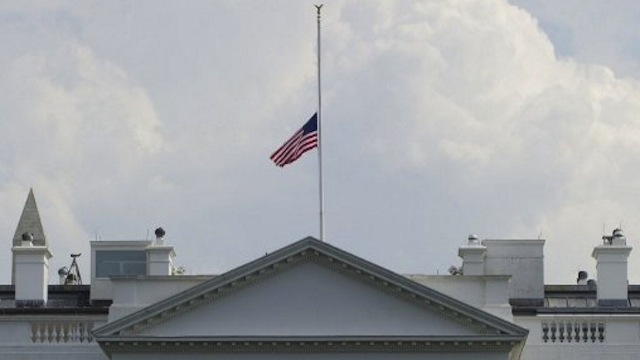SUMMARY
This is AI generated summarization, which may have errors. For context, always refer to the full article.

WASHINGTON, United States – The US economy shrank in the fourth quarter of 2012 as Washington slashed defense spending and businesses trimmed inventories ahead of the feared fiscal cliff, Commerce Department data showed Wednesday (Thursday, January 31 in Manila).
Weather — especially the superstorm Sandy that battered the northeastern coast at the end of October — was also a key factor in the economy’s 0.1% contraction, the first since the Great Recession ended in mid-2009.
But economists, though surprised at the sharpness of the slowdown, played down the reversal, noting strengths in consumer spending and business investment.
And the Federal Reserve attributed it to “weather-related disruptions and other transitory factors” even as the central bank kept its easy-money policy in place to help the economy.
At the end of a two-day meeting, the Fed’s policy board, the Federal Open Market Committee (FOMC), predicted that the economy would grow “at a moderate pace” in the months ahead.
As expected, it left in place its record-low 0%-0.25% benchmark interest rate and its $85 billion a month asset purchase program, aimed at holding long-term interest rates down to shore up growth.
US equity markets fell Wednesday in reaction to the fourth-quarter data; the S&P 500 lost 0.39% to end at 1,501.96.
The dollar also fell against the euro, which bought $1.3564 compared with $1.3493 late Tuesday.
But most of the greenback’s loss came well before the US growth numbers, and was mainly driven by a jump in the European Commission’s January eurozone confidence index, which rose to 89.2 points, a level last seen in June 2012.
The Commerce Department’s first estimate of quarterly growth is often heavily revised later as the data becomes more complete, but economists were surprised that it had turned negative.
The data showed that authorities at all levels tightened the reins in the October-December period, forcing the slowdown.
The cuts were unexpectedly sharp at the federal level, with 15% overall contraction in spending.
Underlying that was a 22% reduction in defense outlays ahead of the programmed “sequester” — a $110 billion federal spending pullback originally set to hit from January 1.
The sequester, half of which must come from defense, still looms at the end of March if political leaders cannot craft a less austere program for deficit reduction.
But the avoidance of the sharp tax hikes of the fiscal cliff before the January 1 deadline could help with a rebound this quarter, especially from business investment, according to analysts.
The Commerce Department said that despite the dismal fourth quarter, the economy expanded 2.2% overall in 2012, a pickup from 1.8% in 2011.
The third quarter came in at a strong 3.1%, and economists said they expect a modest rebound during the current 2013 first quarter.
Economists said the data revealed encouraging strengths in the economy.
Despite the looming cliff — which could have meant a sharp tax increase for all Americans — consumer spending climbed from the third quarter, as did business investment in equipment and software, and investment in housing.
But businesses pulled back investment in inventories, and the employment record shows they were cautious about hiring during the period.
“The slight decline was the first since the recession in 2009, although it almost certainly overstates weakness significantly after what was exaggerated strength in Q3,” said Jim O’Sullivan, chief US economist at High Frequency Economics.
“It would be a mistake to view this drop in GDP — driven by temporary corrections in defense spending and inventories — as a possible harbinger of recession,” said economist Nigel Gault at IHS Global Insight.
“The incoming data points to continued growth, and we expect GDP growth to rebound to around two percent in the first quarter.”
The Federal Reserve’s policy statement made brief reference to the poor growth, but the FOMC appeared confident that, with its ultra-low interest rate policy in place, growth would resume to the moderate pace of the past year, with some of the strains of the eurozone crisis easing.
But it warned that it “continues to see downside risks to the economic outlook.” – Rappler.com
Add a comment
How does this make you feel?
There are no comments yet. Add your comment to start the conversation.